It is He who spread out the earth, placed firm mountains and rivers on it, and made two of every kind of fruit; He draws the veil of night over the day. There truly are signs in this for people who reflect.
— Quran 13:3

The Emperor’s Gift: Circles of Knowledge
Entitled The Emperor’s Gift: Circles of the Sciences and Tables of the Figures (Tuḥfat al-Khāqān:Dawāʾir al-ʿulūm wa-jadāwil al-ruqūm), the manuscript is a graphic encyclopedia of universal knowledge, which, according to tradition, was generously offered by the Ant to King Solomon. It was produced in 19th-century Iran as a repository and confluence of knowledge that crossed time and continents. It was compiled by the Persian scholar Mirza Muḥammad al-Akhbārī (c. 1764-1817).
Recovering the history of the manuscript, its contents and function, became the focus of the fifth Power of the Word. After months of collaborative research, philologists, scientists, designers, educators and university students finally succeeded in deciphering its secrets.
During the process, two historians of science engaged in international archival research, contacting colleagues and scouring catalogues, looking for copies of this text around the world. A handful of similar manuscripts were thus discovered in Iran, Egypt, Qatar and the USA, helping the scientists to overcome paleographic difficulties, and to translate and understand our Gulbenkian copy. The research also encompassed the discussion of its content with teachers of Islam, with experts in pigment analysis and with designers who created 3D models in a FABLAB workshop.
During the project, Rúben Júnior (Amora, 2001-), a young artist took on the responsibility of illustrating the most relevant moments of the collaborative process, in this Memory Book below, that gave rise to the exhibition in the Islamic East Gallery.
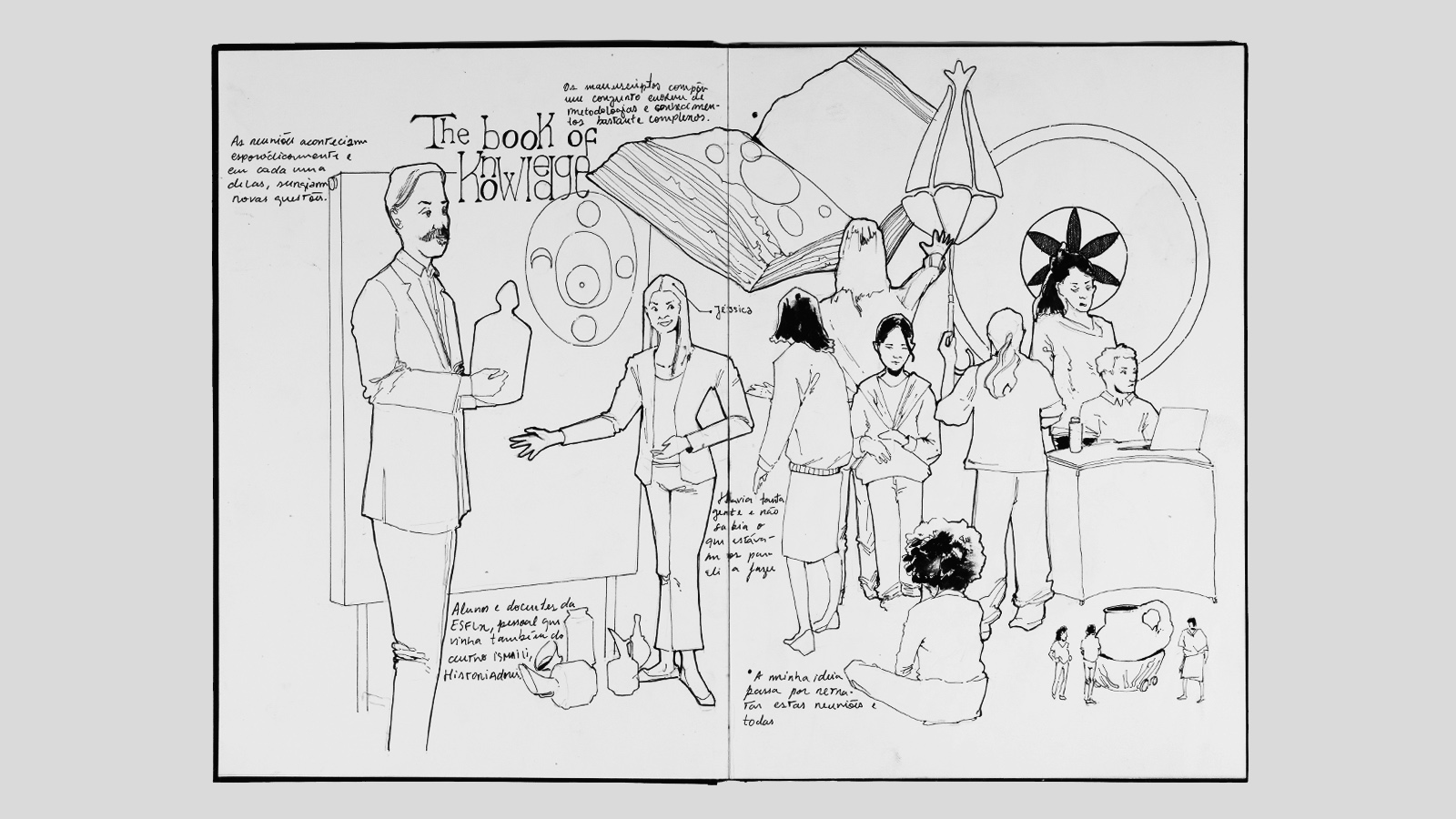
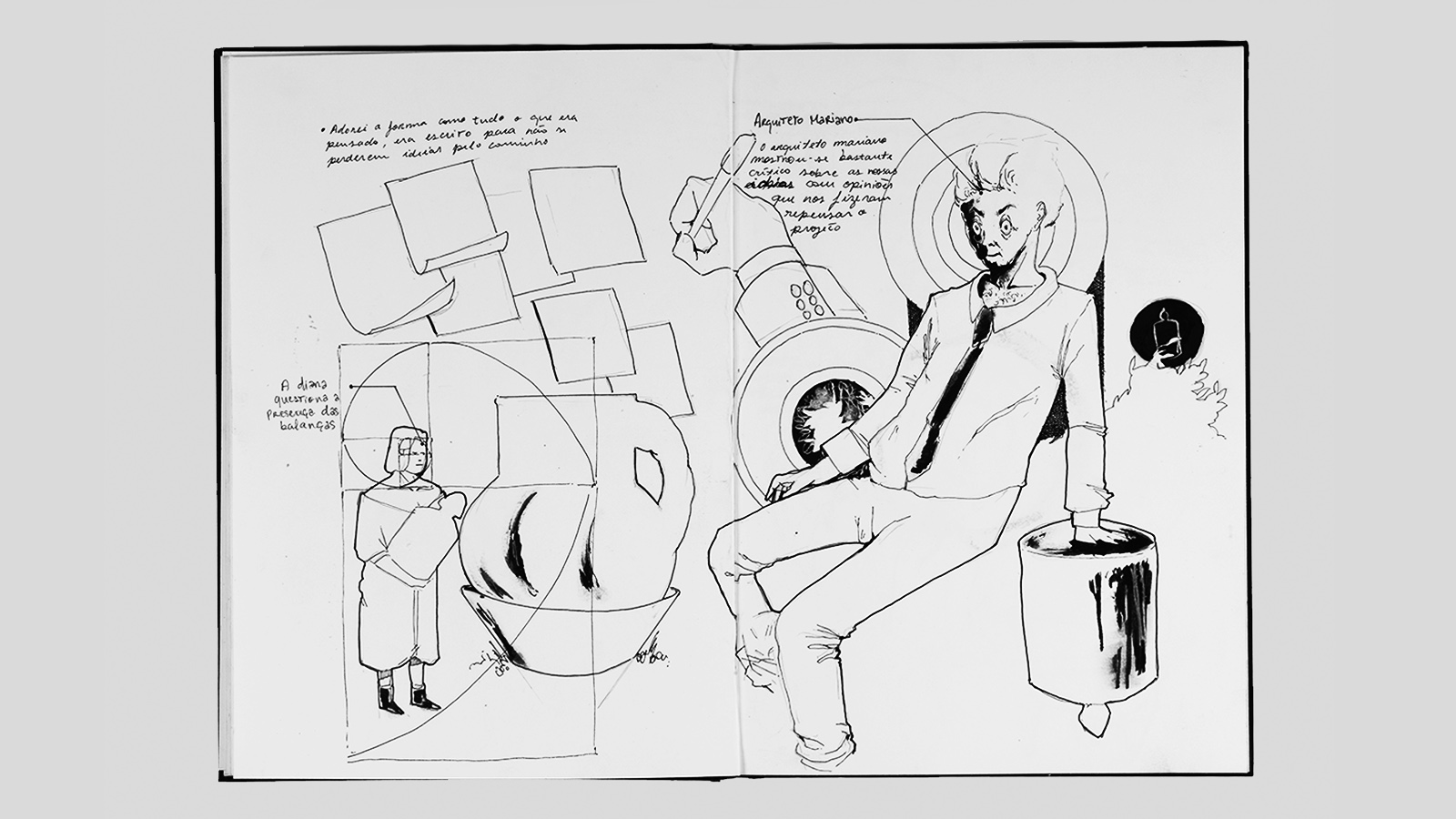


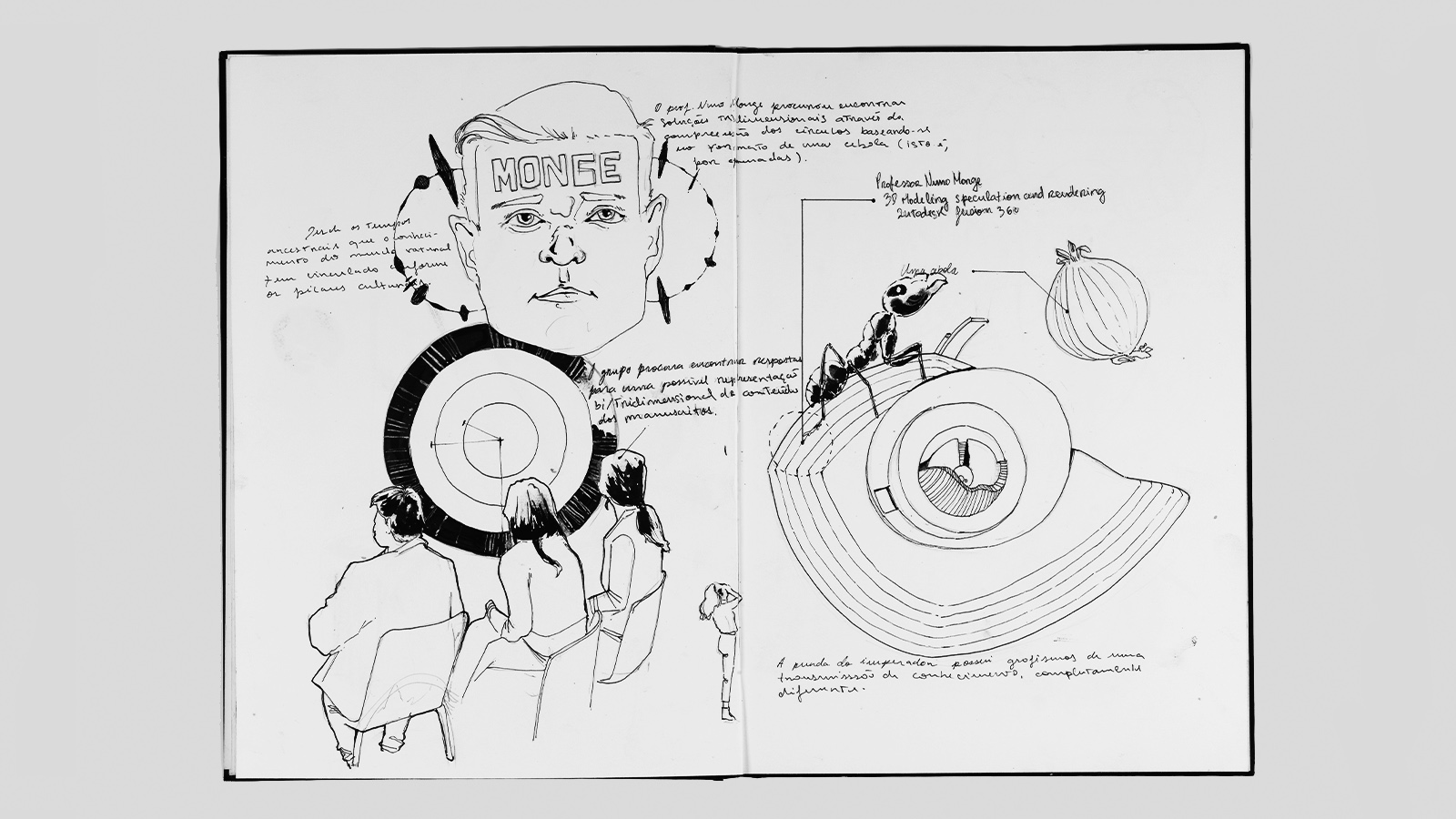
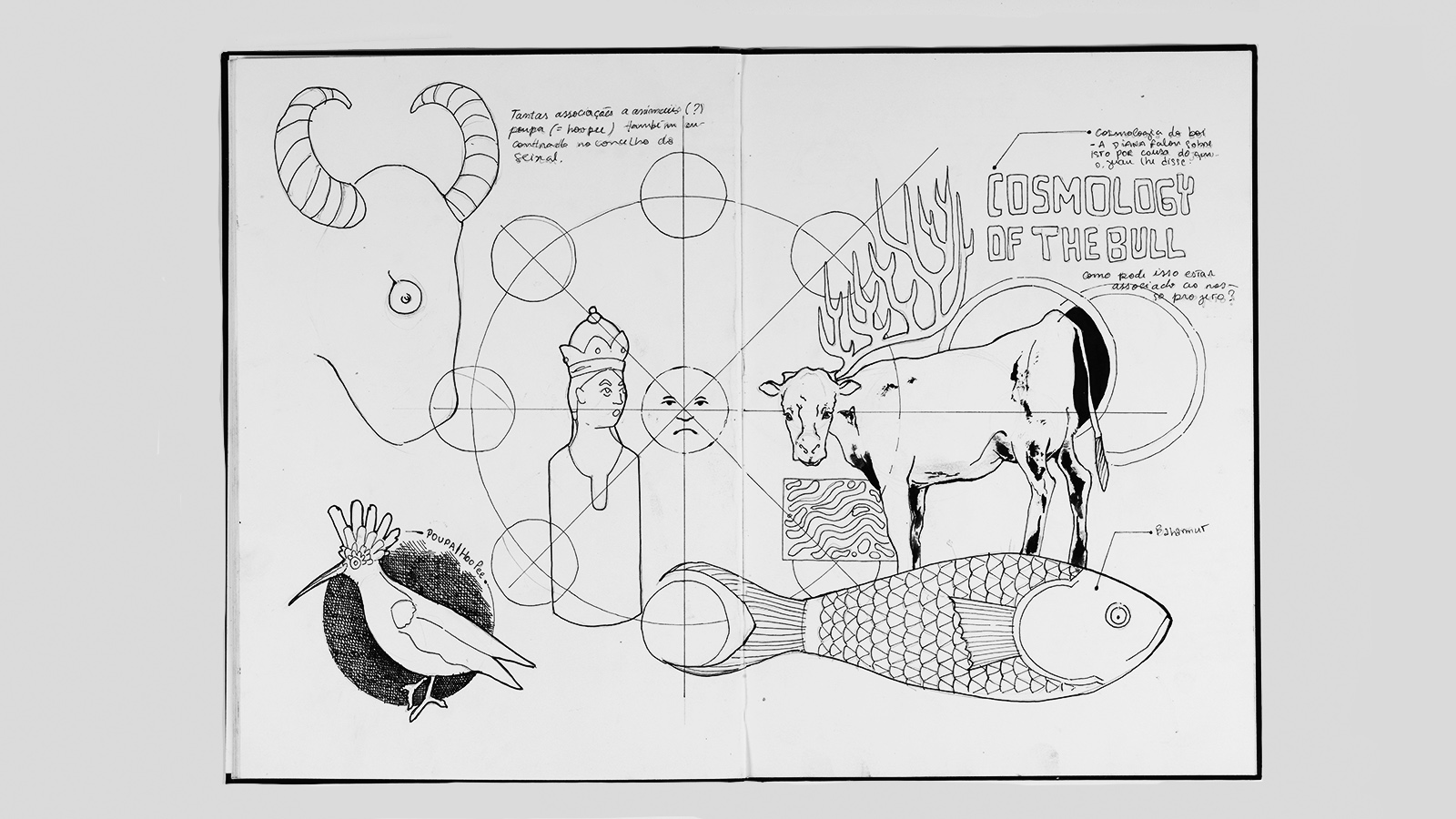
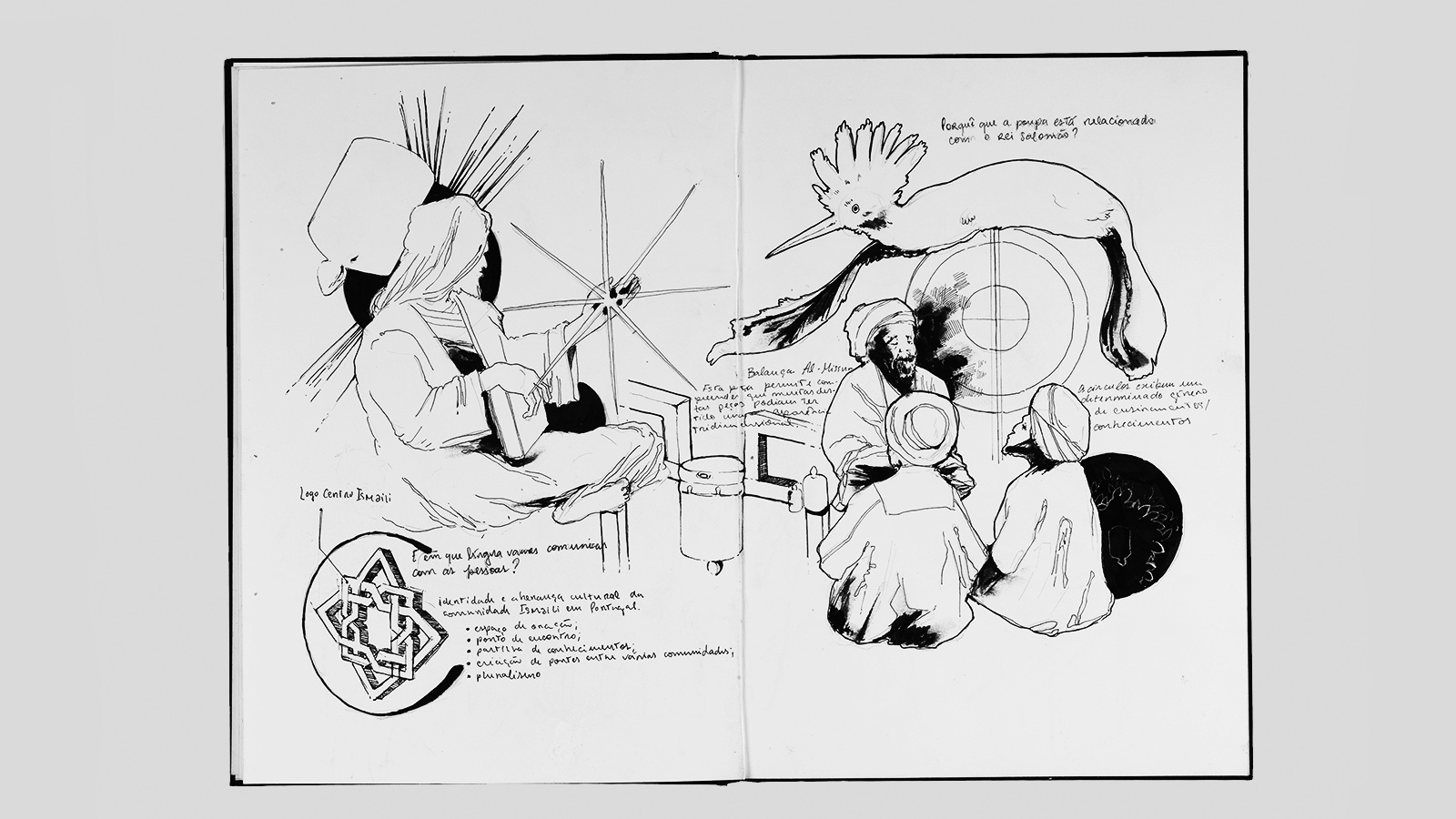
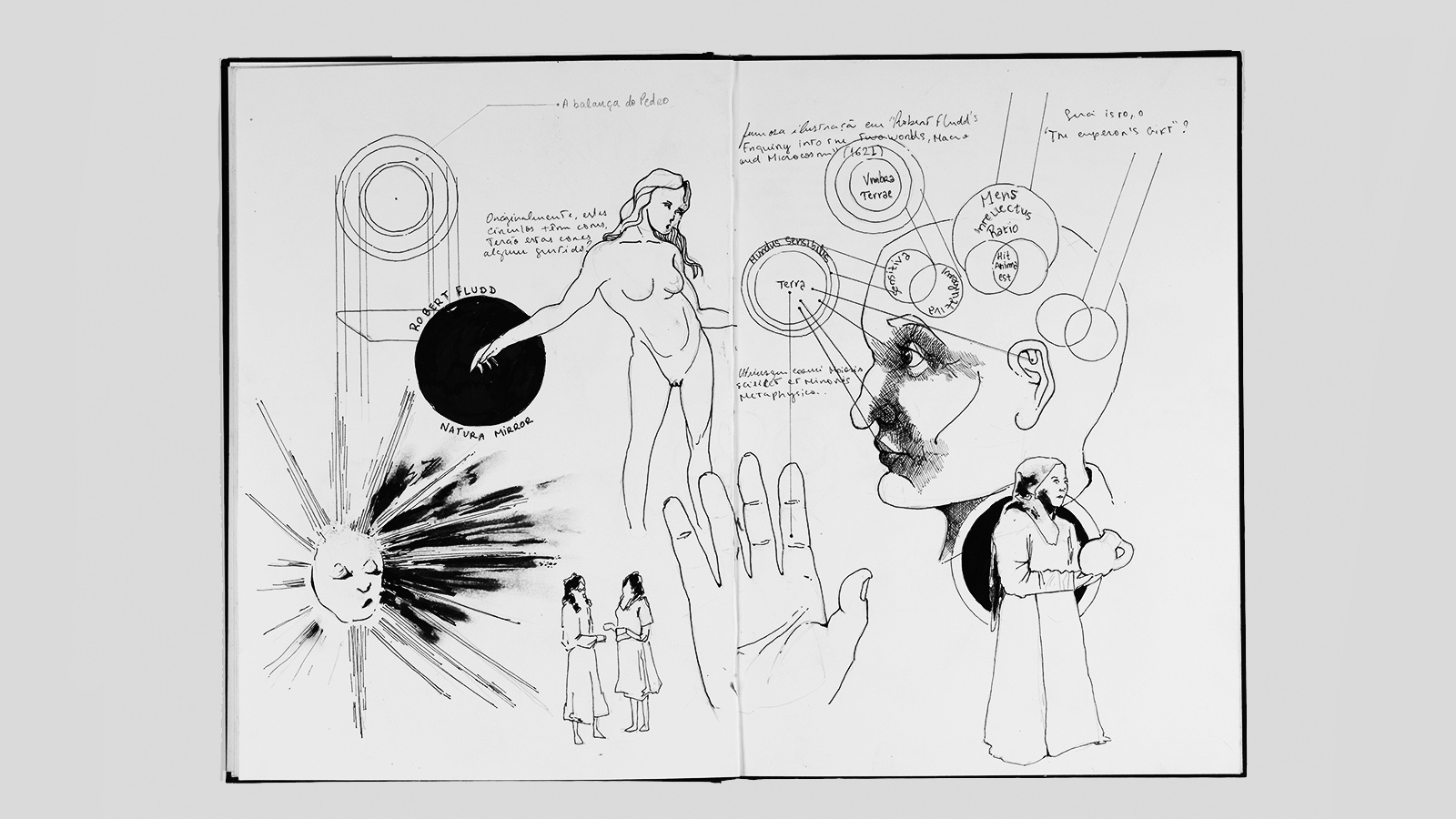








The Emperor’s Gift is a wondrous visualization of three levels of information about Heaven, the World and Humanity, presented in 108 circular diagrams and tables. The modern dichotomy between science and religion is notably absent, and the information conveyed is simultaneously ancient, medieval and modern. Compiled by the Persian scholar Mirza Muḥammad al-Akhbārī (c. 1764-1817), its contents range widely: sacred and mystic texts travel around in spirals, lists of measures for locating stars and cities are laid out like carpets; celestial and earthly hierarchies reverberate through concentric rings…
One can only speculate about the reason for laying out such a diverse information on these complex geometrical shapes, but the use of diagrams as an aid to memory and understanding was a common practice throughout the Middle Ages. The structure of the human soul and of the intellect were conceived as reflecting the spherical shape of the skies and of the heavenly motions.
The richly illuminated Gulbenkian manuscript stands out as a luxury product, most likely crafted for a prominent individual. More generally, and judging from the quirks and alterations found in the copies, it seems that the text was considered mostly a talismanic work, combining sacred and scientific contents with the magic power of numbers through geometrical figures.
The 108 circles and tables deal with topics as varied as Aristotle’s conception of the cosmos, Avicenna’s contribution to medicine or the Zodiac Signs of Ancient Babylon. Indeed, The Emperor’s Gift testifies to the wide circulation of natural knowledge beyond cultural boundaries, over nearly four thousand years. From the 8th century CE, Arabic became a universal language of science from the Indus River to the Atlantic, with scholars collecting, investigating and adopting ideas from earlier traditions, building upon them, and sharing them widely.
It is He who spread out the earth, placed firm mountains and rivers on it, and made two of every kind of fruit; He draws the veil of night over the day. There truly are signs in this for people who reflect.
— Quran 13:3
This verse invites humanity to reflect on the signs of God in the Universe and to the search for knowledge. In Islam, this pursuit is regarded as a duty for every believer. Muslims believe that God does not have a beginning or an end, like the concept of infinity conveyed by the image of a circle.
Many Muslim societies and civilizations emphasised learning and the spirit of enquiry. Many Muslim thinkers sought out diverse types of knowledge. Greek philosophy was especially appreciated because it emphasised the use of the intellect (‘aql), something that resonated with the teachings of the Prophet Muhammad and the Quran.
Muslim scientists contributed to all areas of world knowledge in the medieval period, including Al-Khwārizmī’s (d. 847+) who solved linear and quadratic equations in his treatise on algebra (his name gave rise to the term ‘algorithm’) and Ibn al-Haytham (d. 1040) who was the first to argue that vision occurs not in the eye, but in the brain – to name just two.
The encounter of King Solomon and the Ant appears in the opening page of the manuscript. Solomon, Sulayman, Shlomo, is a shared prophet of Christianity, Islam and Judaism, known as the ‘master of all natural things’.
In the story, as presented in the Quran (27:18), Solomon’s gigantic army noisily approaches an enclave of ants. The Ant rallies the community to hide quickly to avoid being crushed. But Solomon, who is versed in the languages of animals, hears her cries, smiles, and diverts the army’s path, sparing the ants. As a reward, she offers him a gift ‘fit for an emperor’, the contents of this book, written in whirling lines of ant-like letters.
Underlying the narrative is a powerful message that, even a commander of wealth and might, like King Solomon, is humbled by the wisdom of the tiny ant who generously shares all her universal knowledge.
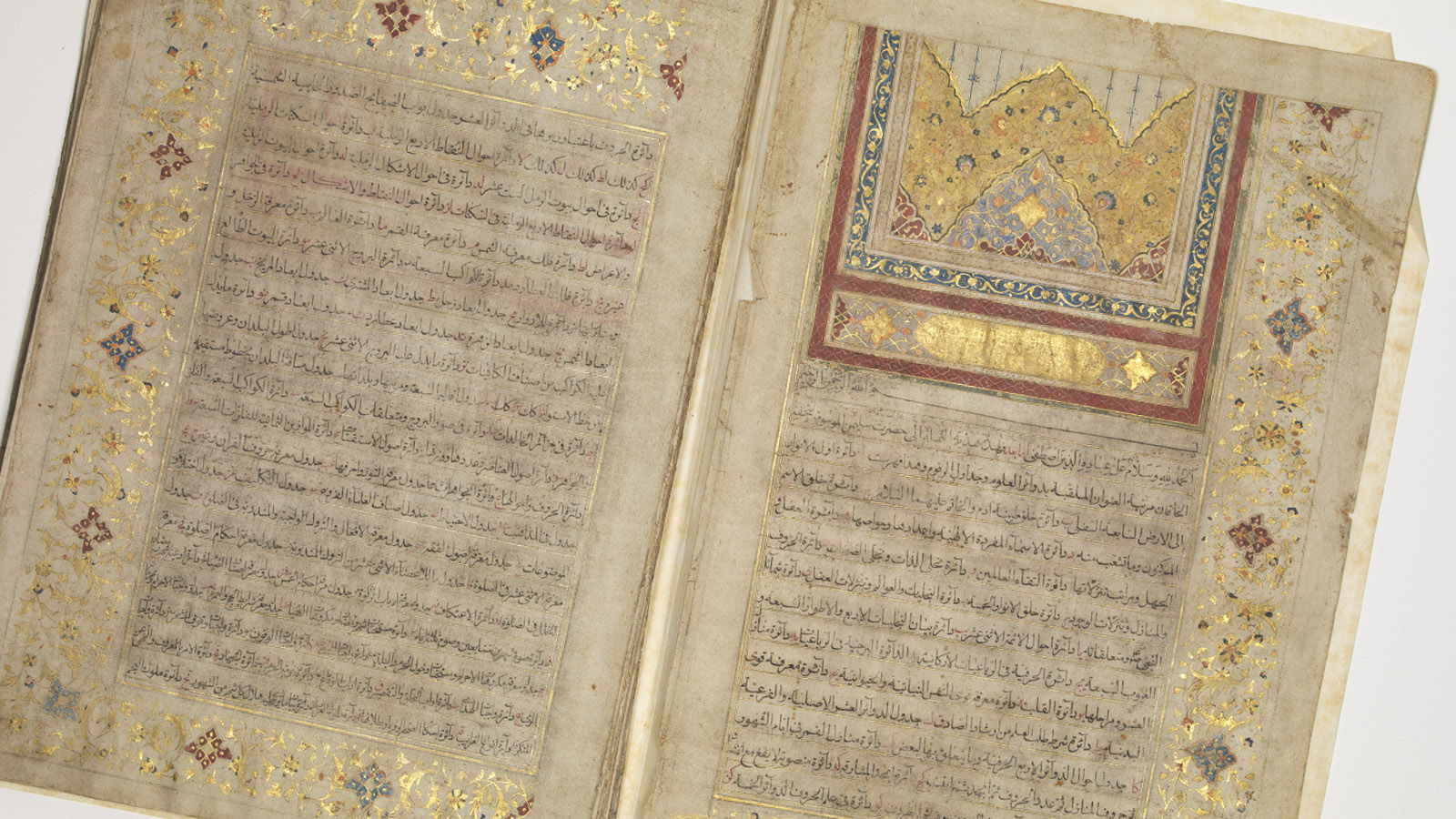

The study of the heavens and the way they influence earthly events has been a preoccupation of humanity since primordial times.
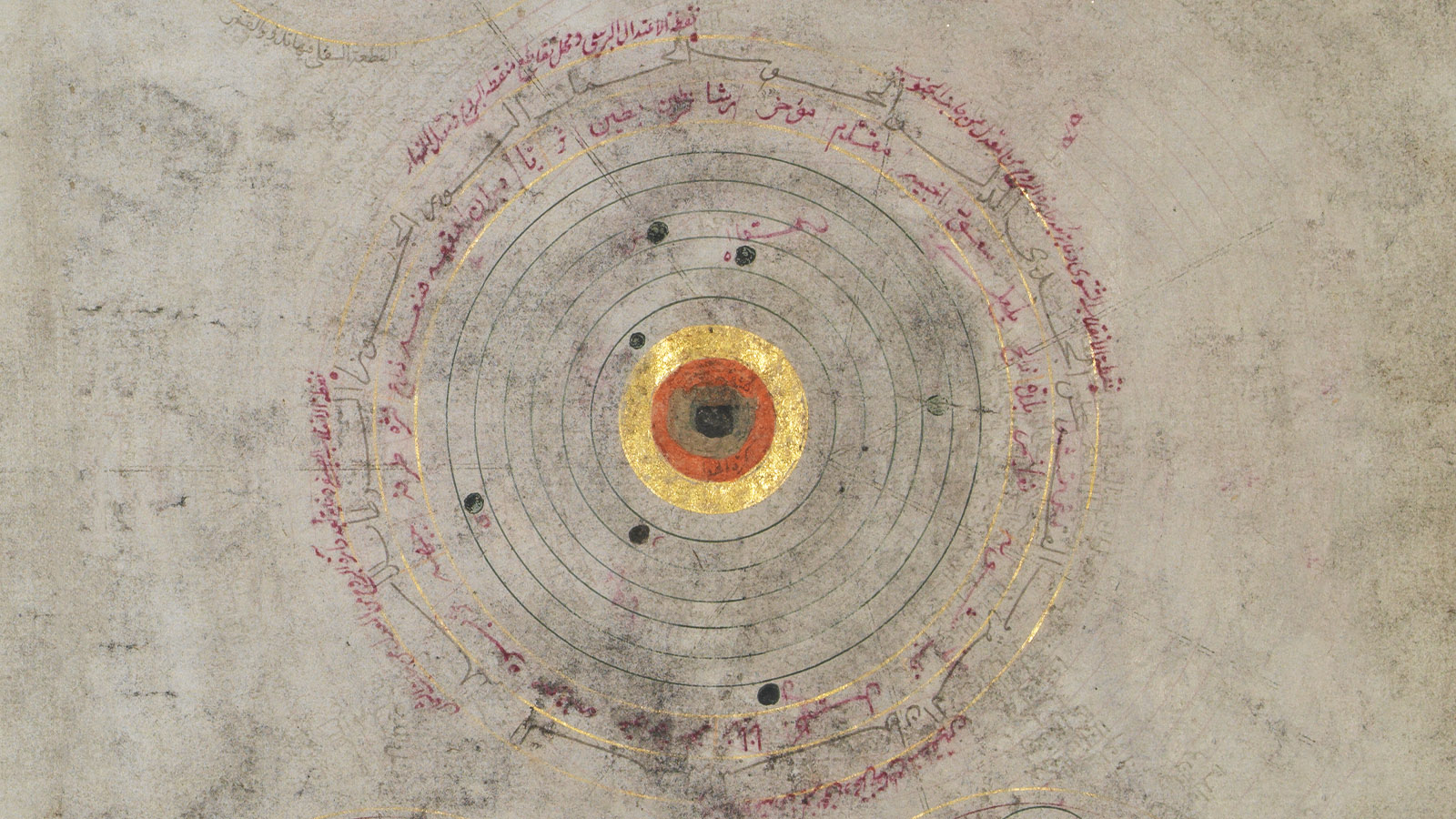

Folio 20v represents a conception of the universe well known since Aristotle (4th century BCE). The middle diagram shows the Cosmos, with the celestial bodies–Moon, Mercury, Venus, Sun, Mars, Jupiter, Saturn–dancing around planet Earth, postulated to comprise four elements: Earth (black), Water (neutral), Air (orange) and Fire (gold). Stars are assigned to the outer circles, according to two traditions: the Lunar Mansions developed originally in China and India, and the Zodiac from Ancient Babylon.
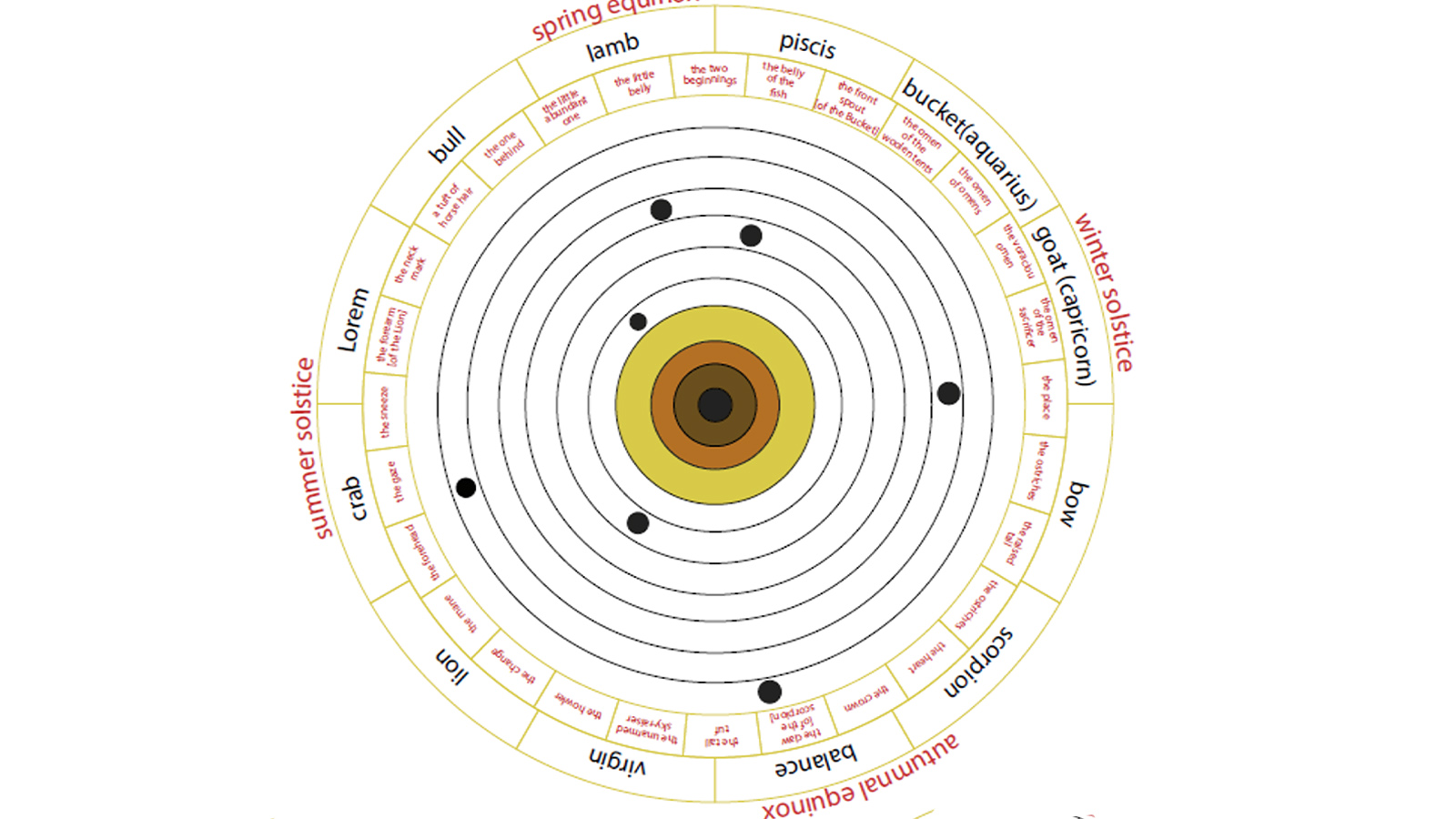

This research project sought to translate the Arabic content and also to copy the diagrams by hand or through digital image editing as seen above. 3D models constructed specially by researchers of design and technology, from the ESELX-FABLAB, helped the team to understand that these circles were intended to represent spheres, as demonstrated by the mobile below which brings dynamism and tridimensionality to the Cosmos diagram.
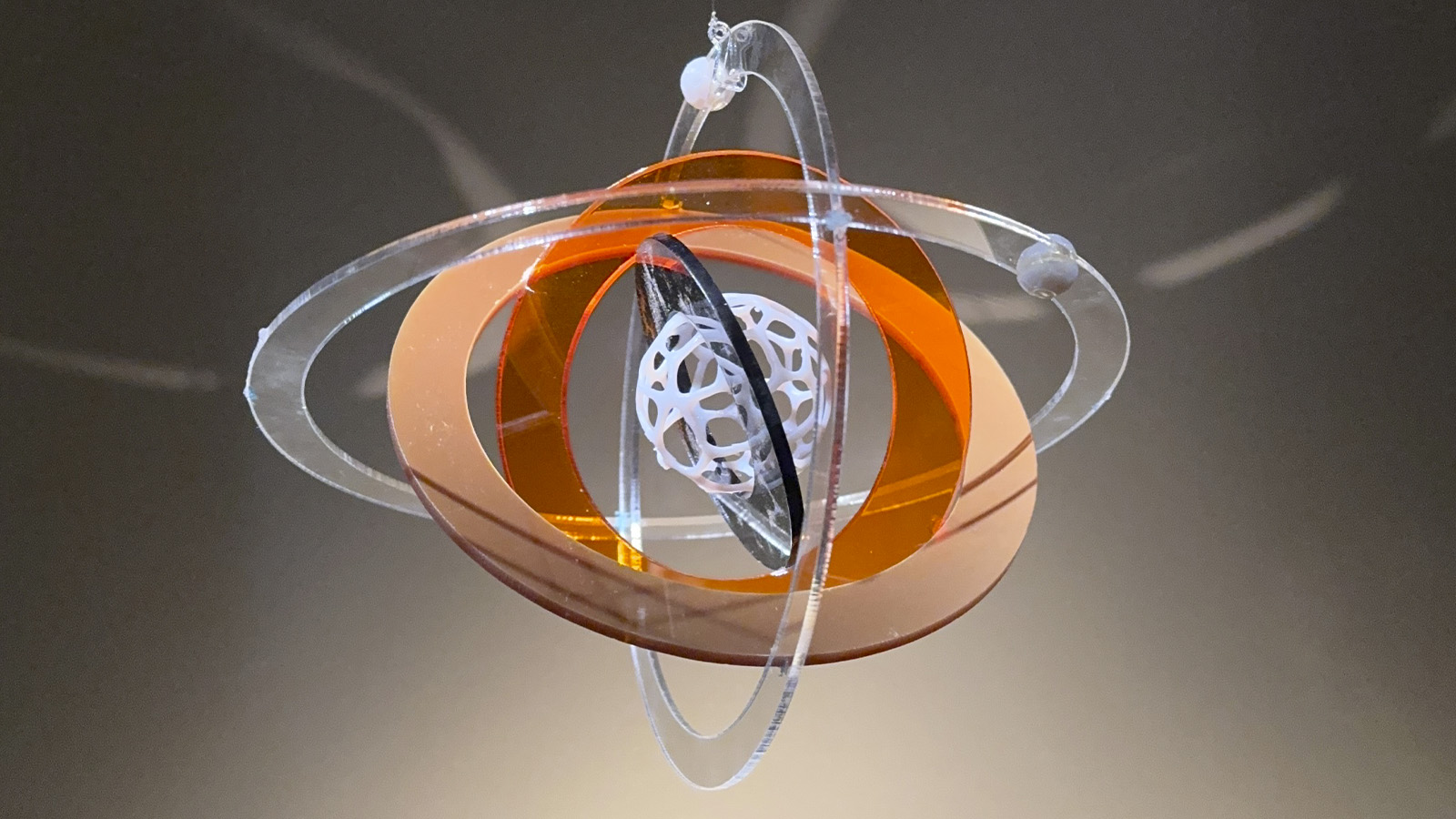

The table on the left divides each zodiac sign into minute parts and assigns Arabic letters to them to create coordinates (fol. 16v). On the right, we have an example of a table displaying longitudinal values, which was a key feature of astronomical practice across Judaic, Christian and Islamic traditions (fol 23r – 22v).
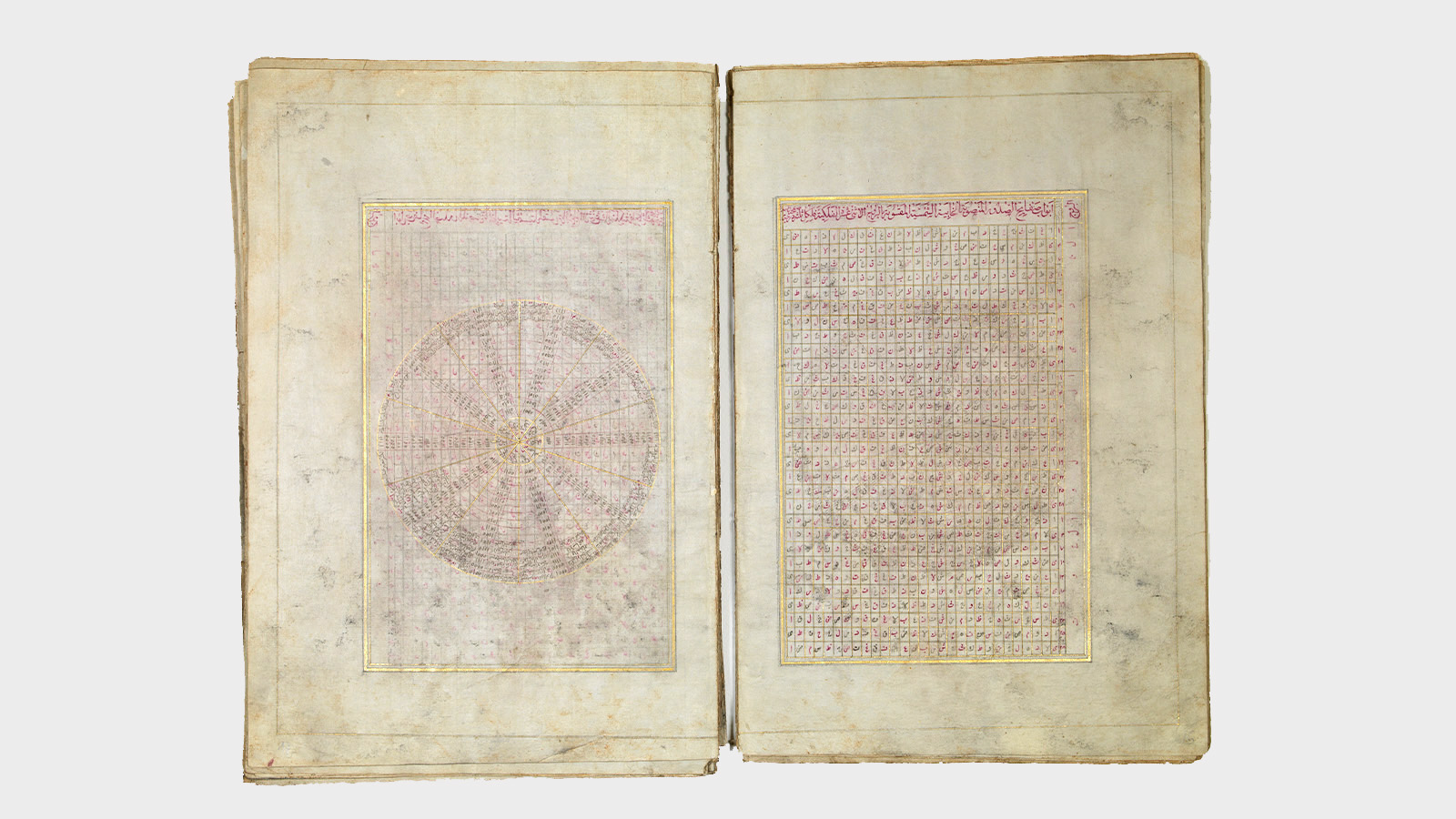
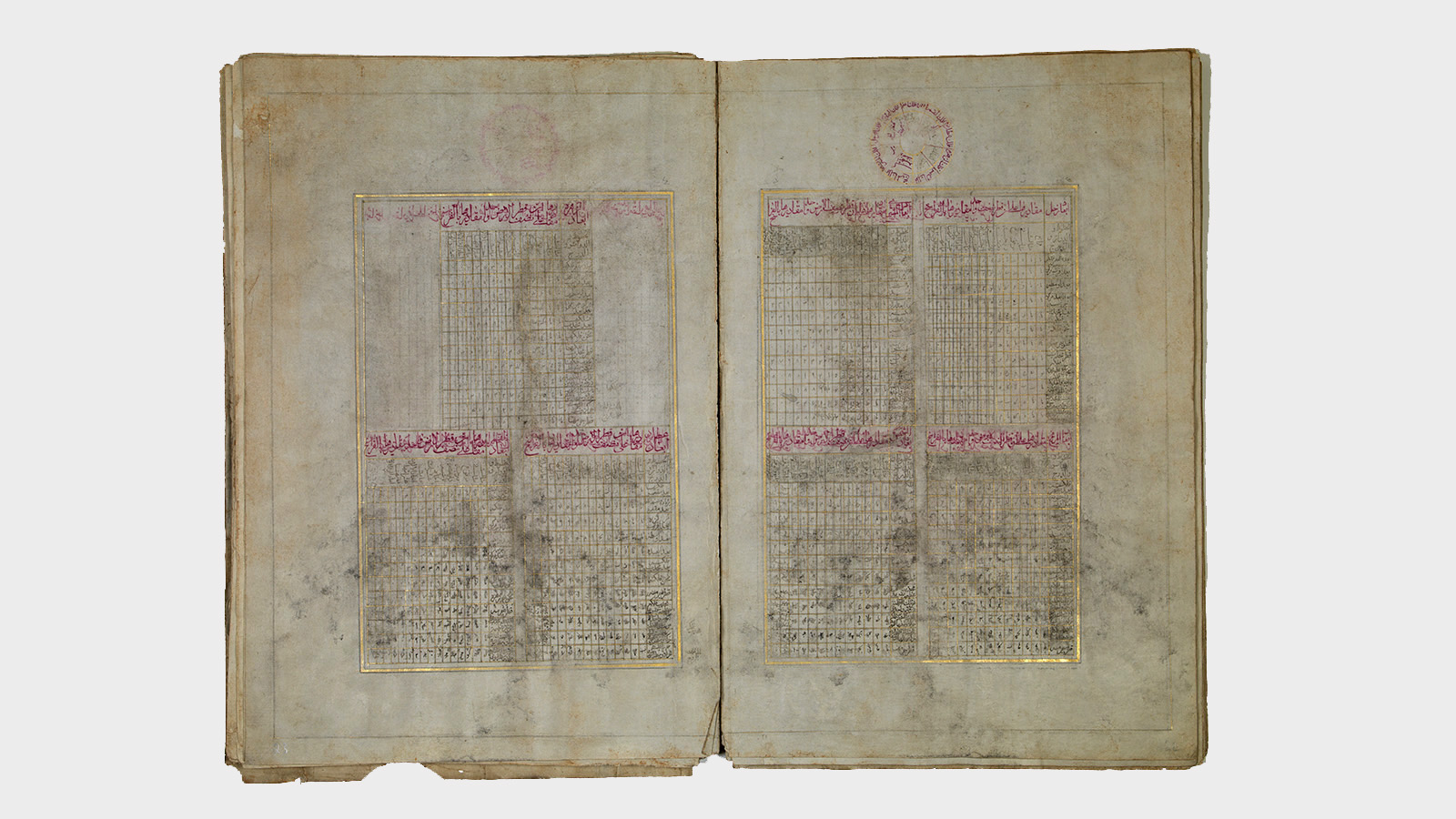


The opening Circle of the manuscript is radiant and intact (fol. 2v-3r). From a central point of light, the whole universe is created, reverberating in rings, arising from the soul of the Prophet Muhammad and travelling through the ‘veils and seas of existence’ (horizontal axis).
This diagram is a direct visual representation of the Creation of the world (cosmogony) told in the margins. The final structure resembles concentric and radial forms found in nature—tree rings, a pebble forming ripples on water, sound echoing. In fact, each circle is not a ring, but the sign of a sphere, a sky which veils a new one, which veils an even newer one, progressing outwards to Reality.
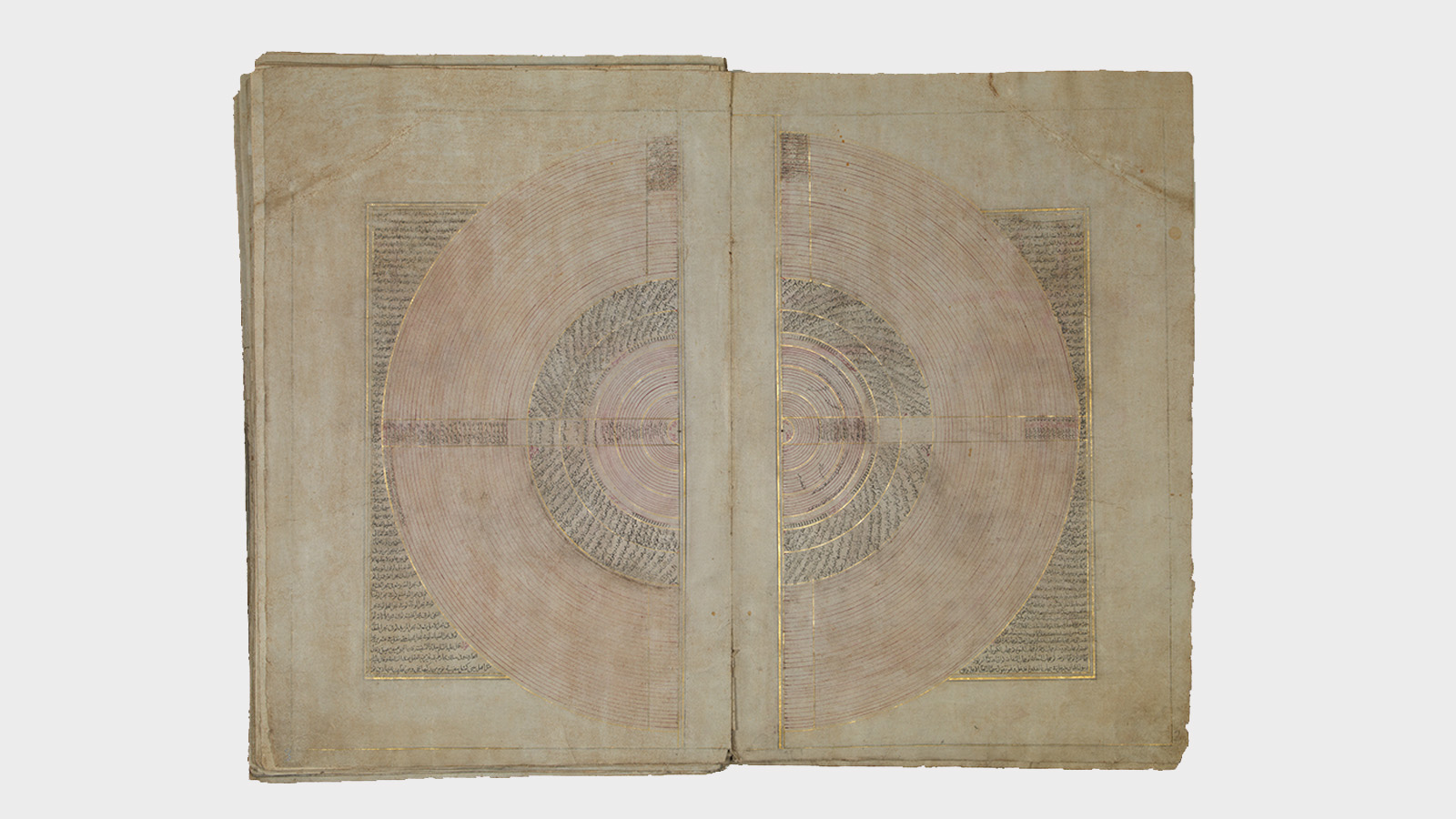

This diagram of ‘The Five Lights’ of the Shia tradition (fol. 8v) has seven golden circles at its centre representing five members of the ‘People of the House’ (ahl al-bayt), each an aspect of knowledge: the Prophet Muhammad, his cousin and son in law ‘Alī, his daughter Fatima, and his grandchildren Ḥasan and Ḥusayn. The remaining two circles correspond to two moments in the Creation of the Universe.
‘The Five Lights’ do not signify an ordinary human dynasty, but a sanctified hierarchy, the five principles of social order. The First Light, the Prophet, embodies the Quran. Together, the Lights orient and give patterns to human behaviour; they address the perennial question, ‘How should I act?’
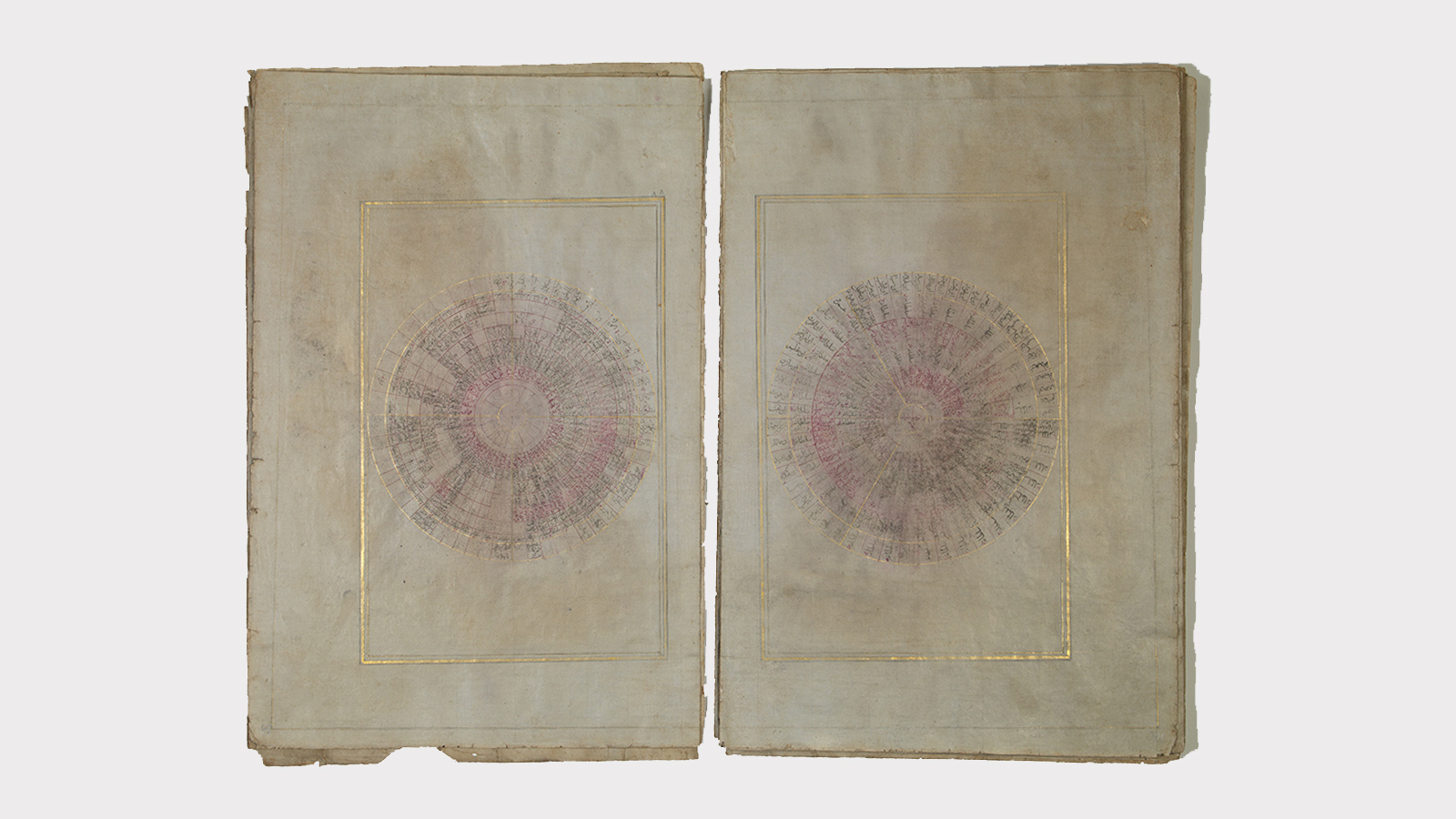
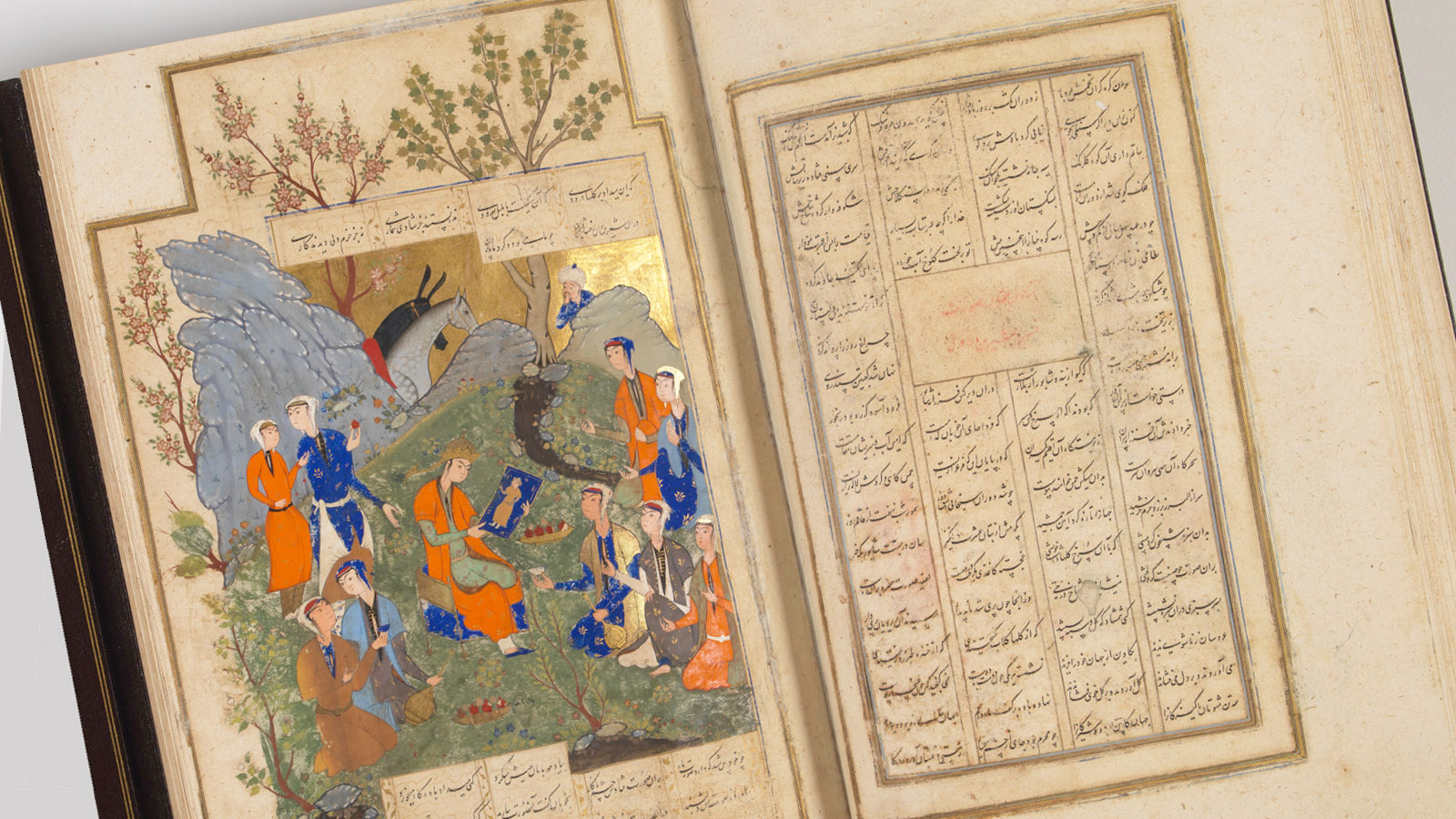


The Emperor’s Gift closes with the Circle of the ‘Kings of Persia’ (fol. 45r). The order of the monarchs is like a spiral spinning through the ages of time, across the Persian royal dynasties. Powerful women are included such as the Armenian princess Shirin who married the Sasanian ruler Khusraw II (r. 590 to 628) to become queen of Persia.
In the garden scene above, Shirin sees Khusraw for the first time in the portrait she holds in her hands. Their tragic love story was immortalized in the Shahnama (‘Book of Kings’) and by the famed poet Nizami in the 12th century.
One circle, one red axis, two pieces of blue string, two plates…the image of a balance, but balancing what? The whole image (fol. 6v) is interwoven with excerpts from the Quran (mostly Sura 55). The gold plate (left) reflects the heavenly reality: planets, spheres, and layers of divine light. The silver plate (right), by contrast, is stained with ignorance, corruption, distress, and tyranny.


At the Human level, this Balance manifests itself in ethics, while the Quran frames it at the wider Divine level:
شَهِدَ اللَّهُ أَنَّهُ لَا إِلَٰهَ إِلَّا هُوَ وَالْمَلَائِكَةُ وَأُولُو الْعِلْمِ قَائِمًا بِالْقِسْطِ
God himself bears witness that there is no god but Him, as do the angels and those who have knowledge, while He upholds the Balance (Quran 3:18).
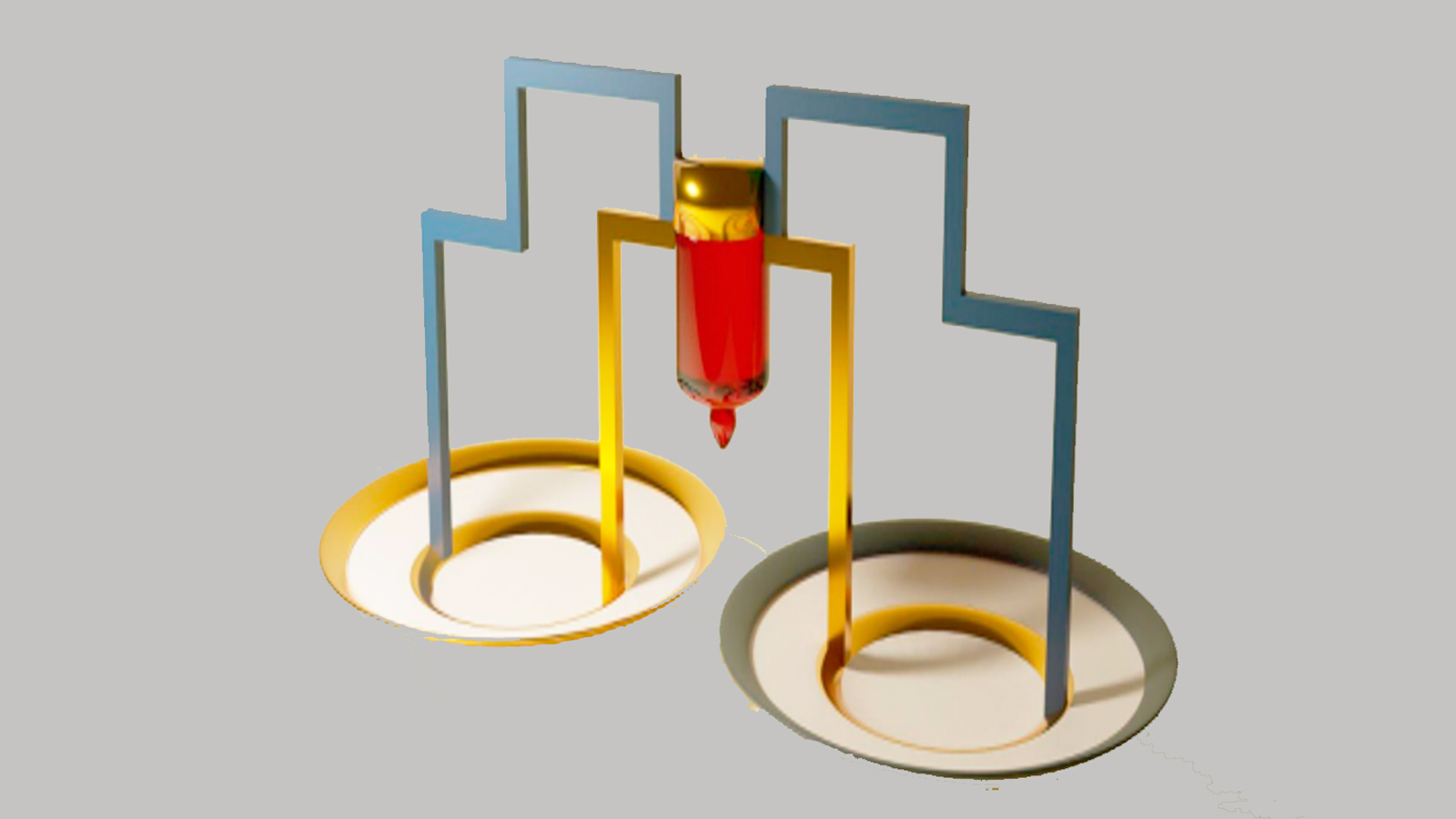

From the al-Mizan or ‘Balance’ diagram, a three-dimensional work was conceived, which incorporates the structural and chromatic elements of the illustration. This piece demonstrates that many of these diagrams could be two-dimensional representations of objects, ideas, concepts or even values. The Balance is a promise but also a warning – humans break the natural balance at their own peril.
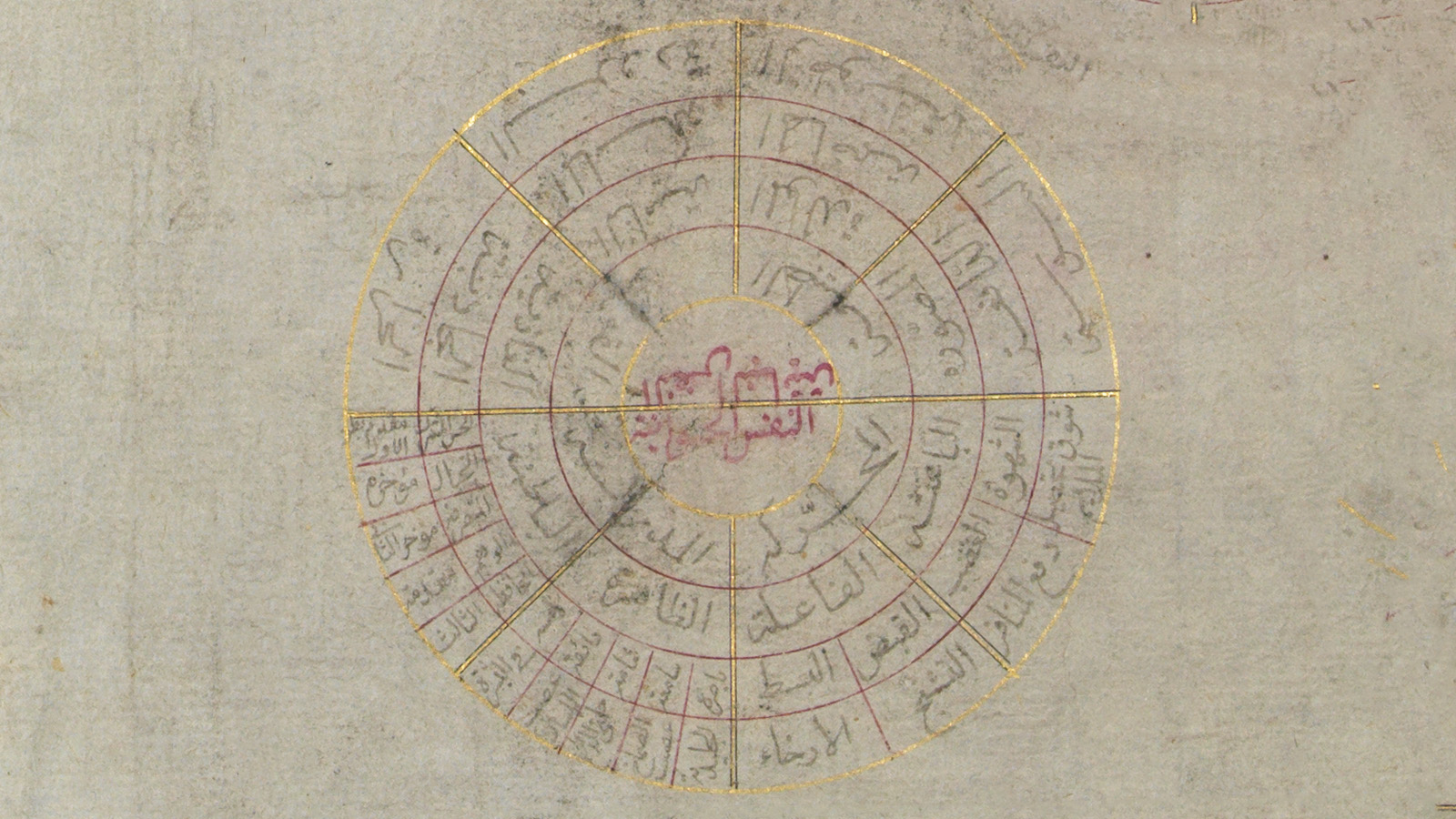

The circle of ‘The Soul’ ( fol. 11v) comes directly from antique traditions of psychology and physiology, as studied by Greek philosophers and then by Jews, Christians, and Muslims throughout the Middle Ages. It is divided in two: the ‘vegetative soul’ concerns the simplest fundamental ‘nature’ and ‘faculties’ of all beings, while the ‘animal soul’ relates to ‘movement’ and ‘perception’.
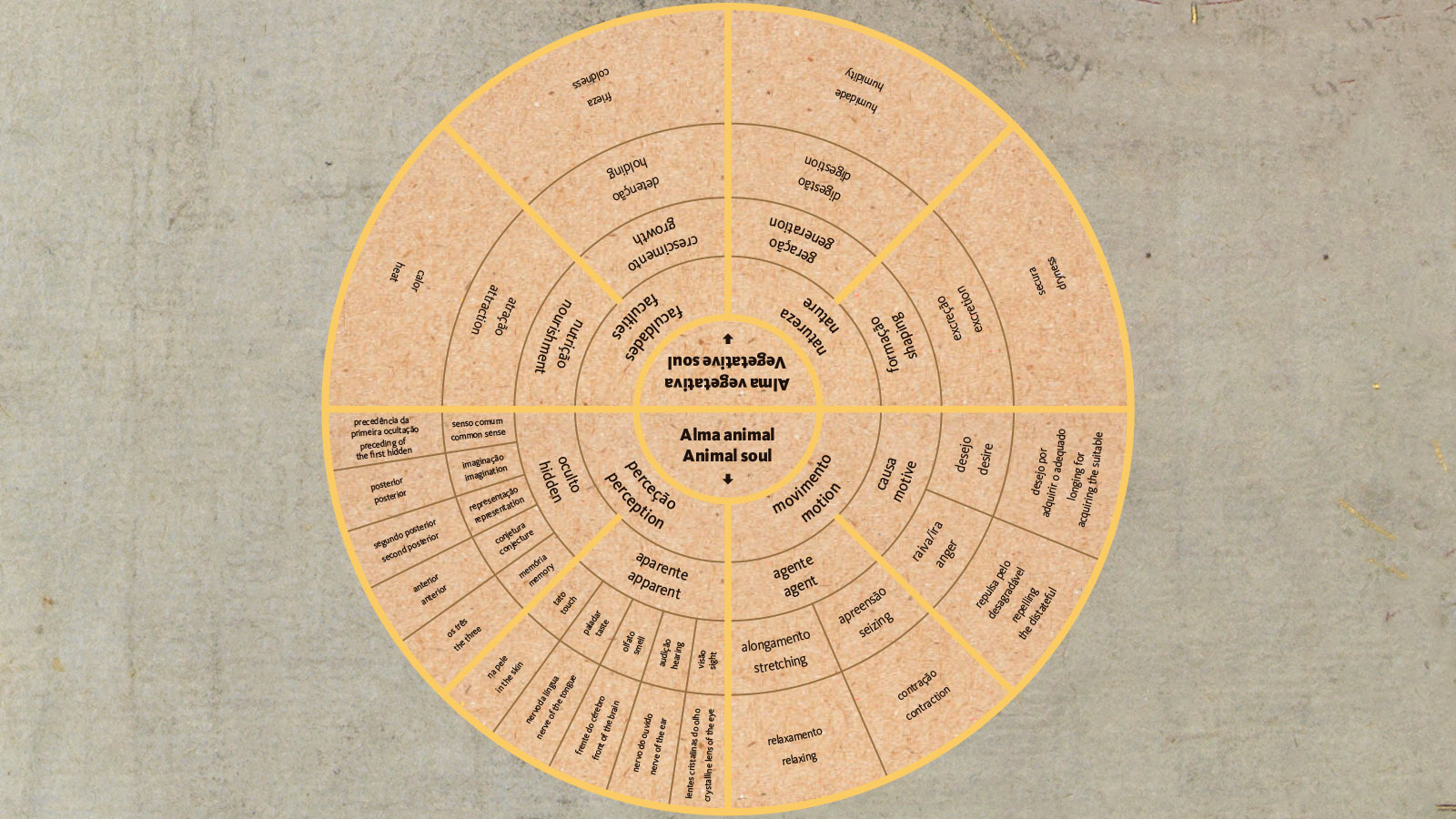

In the exhibition, the Circle of the Soul was developed as an interactive object which invites the visitor to explore how information can be organized in circles and how this arrangement can shape our understanding of the world and of ourselves.
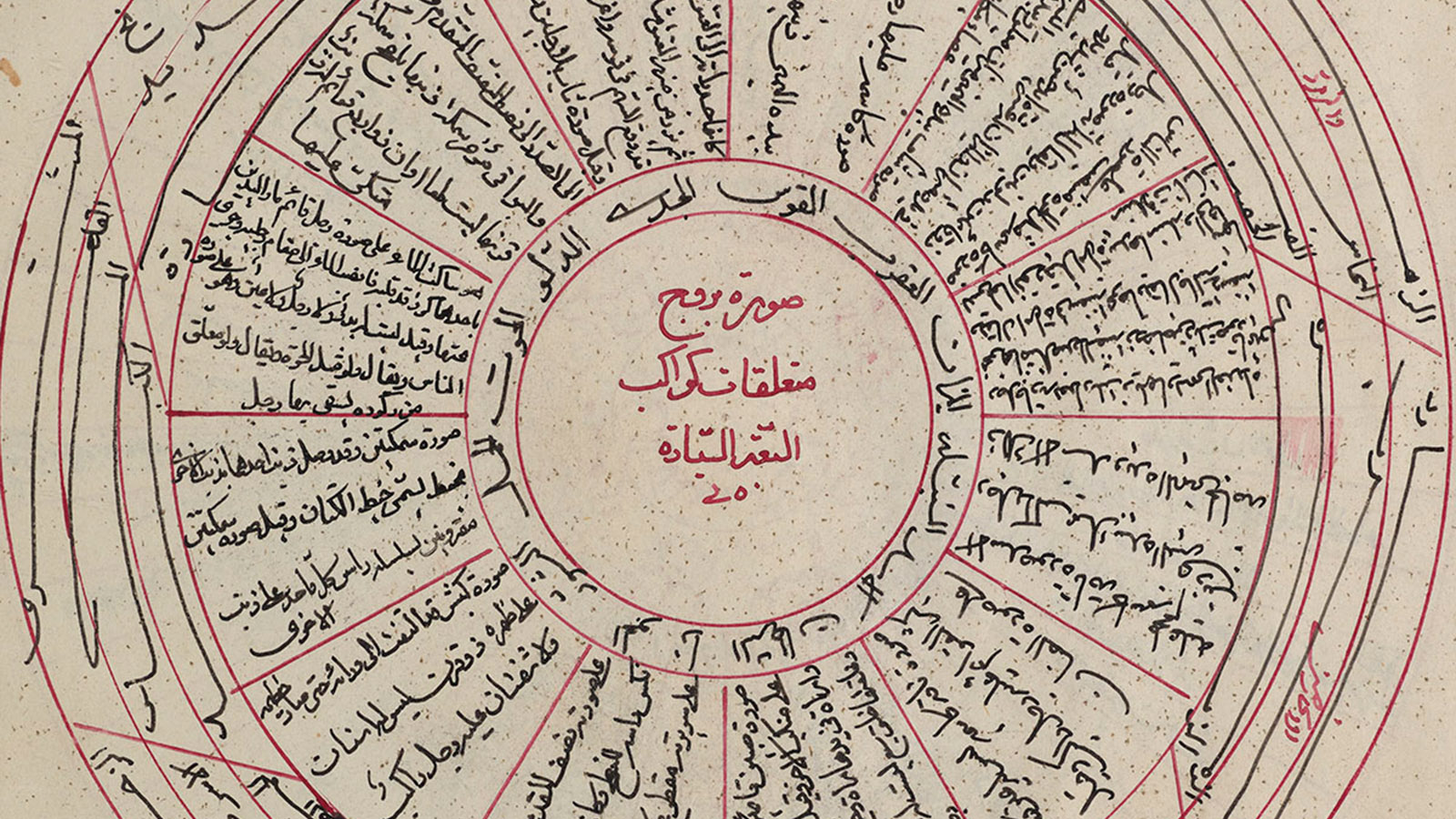

This diagram of ‘Zodiac Signs Pertaining to the Seven Planets’ comes from another manuscript (Princeton University) which aided the researchers to decipher the damaged areas of the Gulbenkian pages.
This Circle reflects ancient astronomical and astrological practices. Combining radial slices and concentric circles, it begins by describing the twelve zodiacal signs and their associated constellations. The three outer circles then connect each of these to a specific organ of the body, a precious stone, a metal, and finally, a planet.
The table below lays out the planetary correspondences as they appear in the manuscript. These formed the basis of astrological practice around the world, with applications in medicine, nativities (birth charts) talismans, etc.
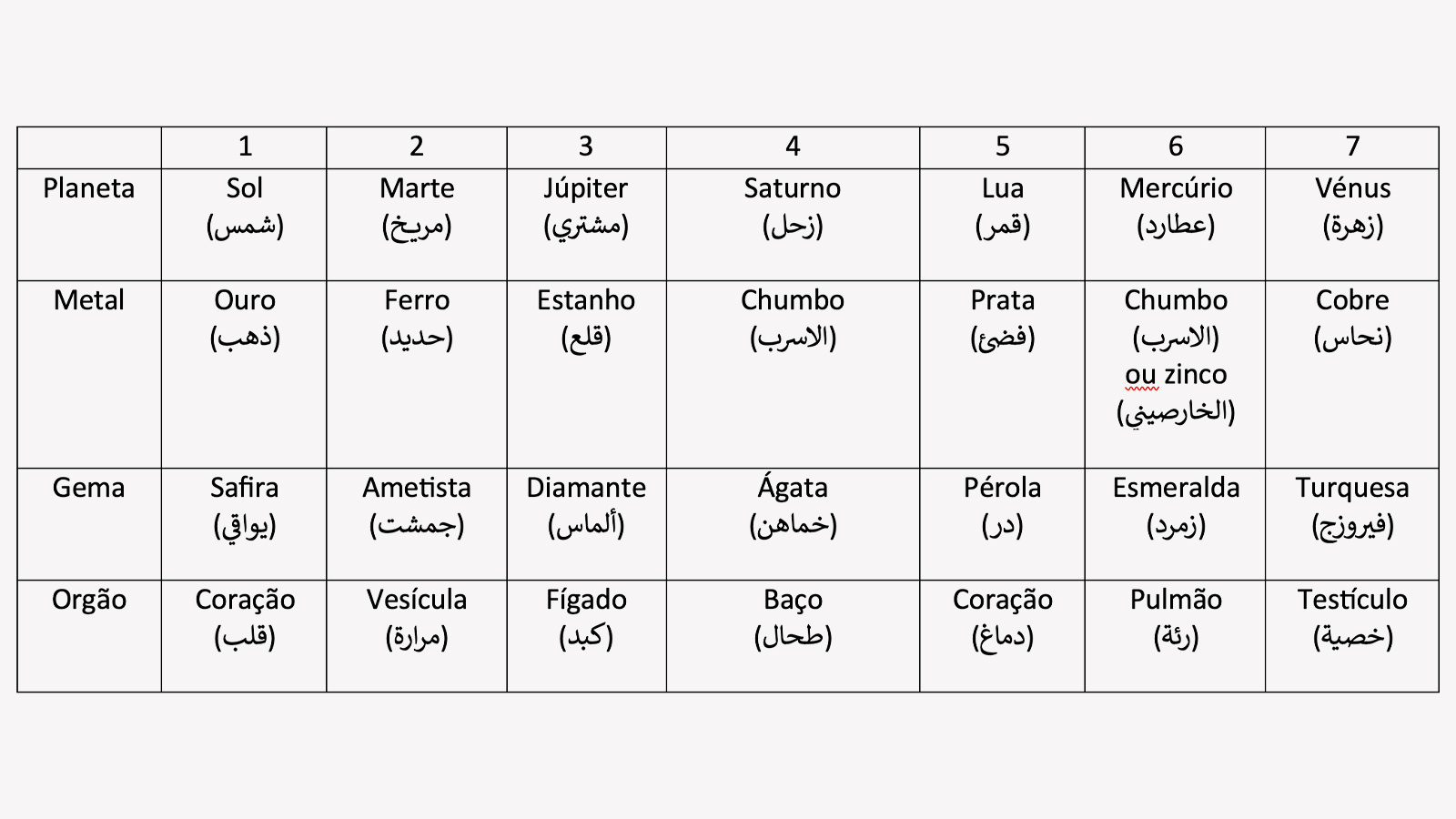

Dark red, two shades of black, shiny gold and a distinct orange are the principal colours of The Emperor’Gift. Recent analysis conducted by a pair of scientists has identified them, respectively, as red insect lac, charcoal or a tin-grey pigment, pure gold, and a mixture of minium, vermillion and orpiment. This kind of study brings the artists’ atelier to life, revealing the presence of sophisticated knowledge for manufacturing pigments as well as access to vibrant international trade networks to acquire precious materials from afar.